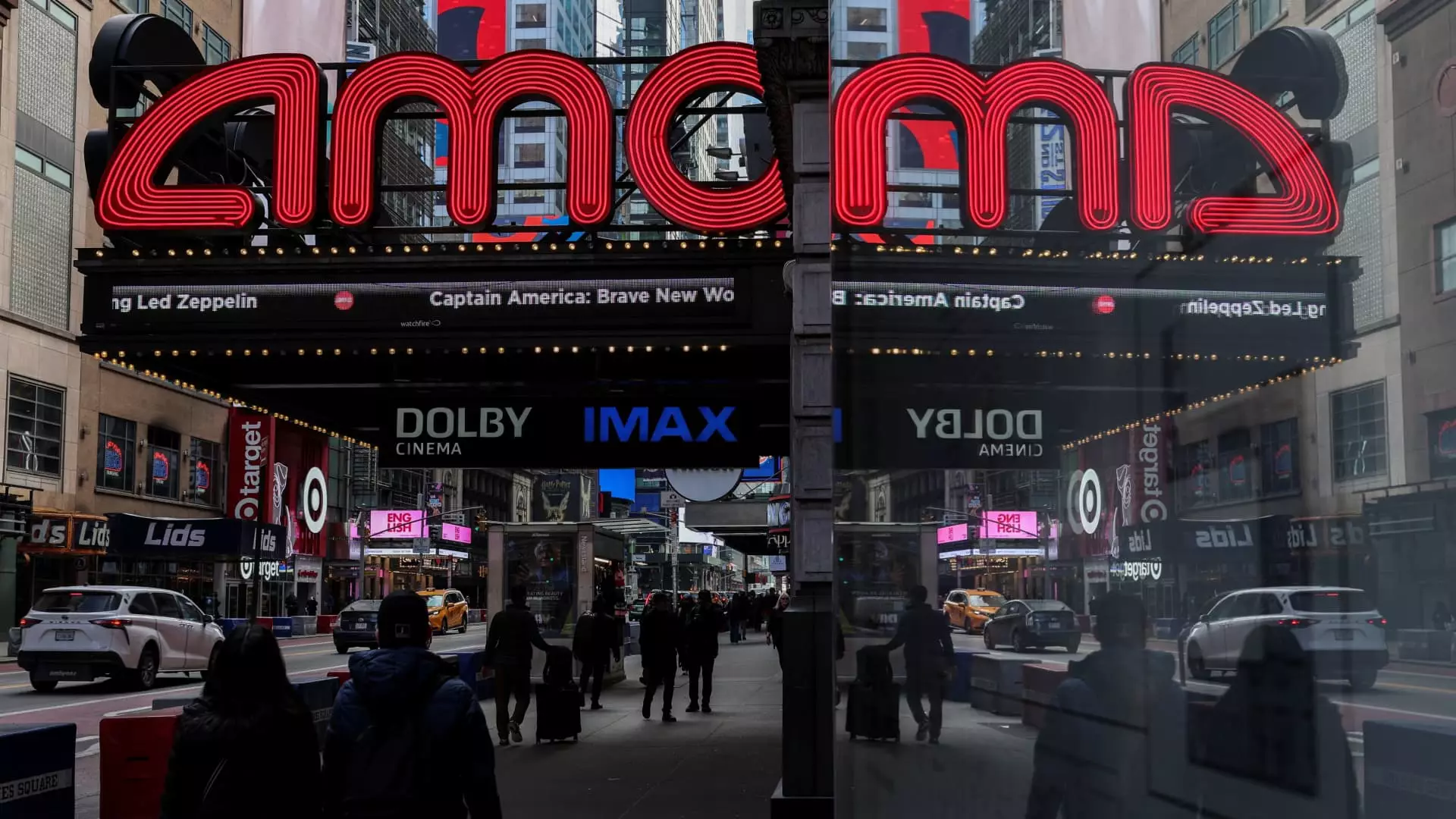In an era where cinema feels like an art form grappling for relevance amidst the dizzying advances of digital content consumption, Hollywood has found a lifeline in the extravagant rise of premium movie experiences. It’s a curious juxtaposition: while streaming services conquer our living rooms, the 35 mm film reel seems to fade into obscurity, giving way to oversize screens and plush seating. AMC Entertainment, the world’s largest cinema chain, recently announced a plan to add 40 Dolby Cinema theaters by 2027, a tremendous uptick that underscores an industry on tilt. Such moves raise serious questions about the nature of cinema as an artistic medium versus a profit-driven enterprise.
The allure of premium formats such as Dolby Cinema, Screen X, and 4DX shines brightly in a film industry clamoring for maximum revenue. Kevin Yeaman, CEO of Dolby, emphasizes that “premium moviegoing is defining the modern box office,” reflecting a broader trend wherein the most extravagant cinematic experiences become the gold standard. However, should audiences fall for this marketing gimmick? Are we being led down a rabbit hole of sensationalism, where substance is trumped by spectacle?
The Illusion of an Enhanced Experience
The shifts in cinematic technology—from IMAX to more advanced PLF (Premium Large Format) screens—point to a broader industry trend focused on creating immersive environments to mask fading narratives. Large auditoriums equipped with advanced sound systems and reclining seats invite audiences to indulge in cinematic escapism. But is this obsession with sensory overload blinding us from critically engaging with the content on screen? We’ve seen thrilling blockbusters like “Oppenheimer” and “Dune” rake in massive numbers, but they do so partly because audiences lean toward visual gratification over meaningful storytelling.
What’s alarming is that the focus on accommodating bigger budgets has led to an increased ticket price that hovers just under $17. This figure is an 8% hike since 2021 and is indicative of the industry’s tendency to monetize every last ounce of audience loyalty. In a world where cinema tickets were once seen as affordable entertainment, these elevated prices signal a change—one that might alienate audiences who cannot or refuse to pay a premium for a so-called “enhanced experience.”
Luxury Cinema: The New Divide
To add insult to injury, this golden age of blockbuster excess further accentuates disparities in access. While premium theaters proliferate in wealthier regions, traditional cinemas—often found in less affluent neighborhoods—struggle with outdated technology and minimal investment. This bifurcation in the cinematic landscape presents serious ethical questions: are we inadvertently endorsing an industry system that enriches only a select few while neglecting the cultural significance that local, independent theaters offer?
In an environment where the ticket sale of premium formats accounted for 9.1% of the domestic box office in 2024—translating to a staggering $600 million—it becomes clear that the average filmgoer is paying an inflated price for a decidedly flawed experience. Does this reliance on audacious spectacle mean that blockbusters stifle diversity in filmmaking? The answer may lie in the films being left behind, the smaller narratives that audiences once loved, now faded as they scramble for high-octane thrills.
Blockbuster Frenzy: Future Implications
With an overflowing slate of upcoming sequels and franchise reboots, the future of cinema feels preordained. The promise of new films from illustrious franchises like Star Wars and the Marvel Cinematic Universe may delight mainstream audiences, but it begs the question: what of the original stories begging for attention? Filmmakers today seem pressured to adhere to formulas that ensure box office success—not artistic integrity. The expansion of partnerships among major chains serves as a testament to capitalism’s chokehold on art; the monster of Hollywood consumes creativity in favor of guaranteed profits.
As we dissect this evolving cinematic ecosystem, one must reflect on whether we are complicit in this spectacle for spectacle’s sake. If premium formats emerge as the primary revenue stream, will we risk the loss of the artistry that originally drew us to film? A brand-oriented, audience-directed future may promise profits, but it risks rendering an art form into nothing more than corporate machinery. The future of cinema is here, but at what cost?

Leave a Reply